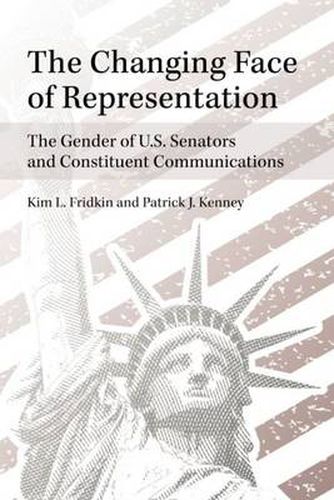Readings Newsletter
Become a Readings Member to make your shopping experience even easier.
Sign in or sign up for free!
You’re not far away from qualifying for FREE standard shipping within Australia
You’ve qualified for FREE standard shipping within Australia
The cart is loading…






As the number of women in the U.S. Senate grows, so does the number of citizens represented by female senators. At the same time, gender remains a key factor in senators’ communications to constituents as well as in news media portrayals of senators. In The Changing Face of Representation, Kim L. Fridkin and Patrick J. Kenney focus on 32 male and female senators during the 2006 Congressional election year, examining in detail senators’ official websites, several thousand press releases and local news stories, and surveys of 18,000 citizens to discern constituents’ attitudes about their senators.
The authors conclude that gender role expectations and stereotypes do indeed constrain representational and campaign messages and influence news coverage of both candidates and elected senators. Further, while citizens appear to be less influenced by entrenched stereotypes, they pay more attention to female senators’ messages and become more knowledgeable about them, in comparison to male senators.
$9.00 standard shipping within Australia
FREE standard shipping within Australia for orders over $100.00
Express & International shipping calculated at checkout
As the number of women in the U.S. Senate grows, so does the number of citizens represented by female senators. At the same time, gender remains a key factor in senators’ communications to constituents as well as in news media portrayals of senators. In The Changing Face of Representation, Kim L. Fridkin and Patrick J. Kenney focus on 32 male and female senators during the 2006 Congressional election year, examining in detail senators’ official websites, several thousand press releases and local news stories, and surveys of 18,000 citizens to discern constituents’ attitudes about their senators.
The authors conclude that gender role expectations and stereotypes do indeed constrain representational and campaign messages and influence news coverage of both candidates and elected senators. Further, while citizens appear to be less influenced by entrenched stereotypes, they pay more attention to female senators’ messages and become more knowledgeable about them, in comparison to male senators.